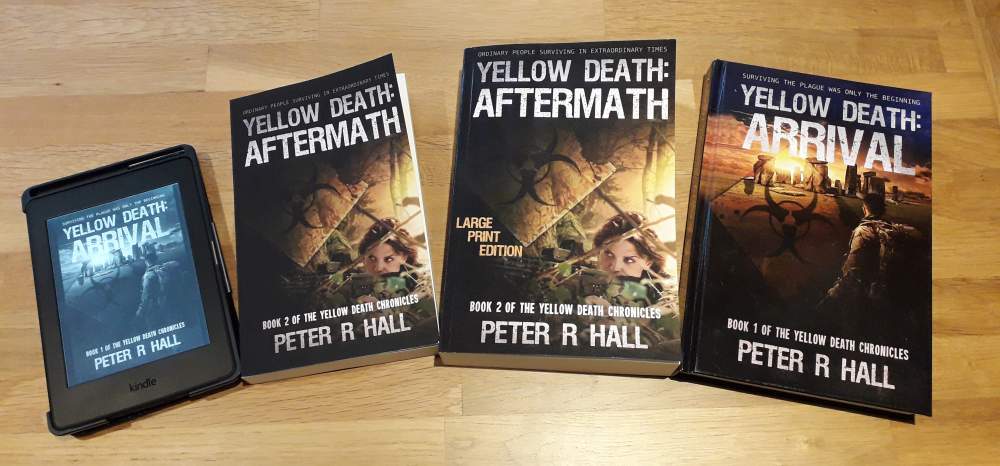Why are Amazon print books so expensive?
This is a question that independent authors are often asked. You can walk into many book stores and purchase paperbacks for a price that would barely seem to cover the cost of the paper. Yet printed books on sale on Amazon often appear relatively expensive – especially compared to the ebook equivalent. So what is going on? Are these sneaky independent authors making a bucket load of money off their paperbacks?
Being an indie author, I wish that were true. However, the exact opposite is the case. Read on to find out why.
Print on Demand
Many printed books on Amazon are ‘Print on Demand’ or PODs. That means Amazon does not keep any stocks and prints off each book as it is ordered. This is remarkable when you think about it. I have ordered a paperback book off Amazon and, within two hours, they have printed the hundreds of pages, plus the cover and bound them together and mailed them to me.
Fifty years ago this would have seemed like some sort of magic. Yet this is done every day with thousands of books. Unfortunately, printing single copies of books cannot be done for the same price as printing the same book thousands of times over. This is the main reason why printed books on Amazon can be relatively expensive.
Of course, this is not always the case. If a well-known author is about to release a book which is expected to be a blockbuster, then Amazon will print thousands of copies in advance and that may bring the price down. Indie authors like myself cannot usually do this.
How are Amazon print books priced?
Amazon calculates the printing costs of a book based largely on the number of pages. The actual size of the book is irrelevant. Thus, a book with 300 pages will have the same print cost whether it is 5 X 8 inches or 6 X 9 inches. Some authors might choose a larger format of book in order to reduce the number of pages, and thus the printing costs. However, customers expect paperbacks to be a standard size, so this technique can backfire.
Amazon will then add a further amount to the printing costs to cover their handling, delivery and give them some profit. This will be presented to the author as the minimum price the book can be offered for sale. If an author chooses this price, then they will receive exactly zero royalties, so generally authors will have to charge more than Amazon’s minimum price (we’ve got to eat!)
In the past few months, Amazon has introduced the facility to produce hardcover books on demand. This is a great new option, but it is no surprise they are even more expensive to print than paperbacks.
The situation is particularly harsh with large print books. Clearly with a larger font and wider line spacing, the large print version of a book will have many more pagers and a higher print cost. For example, the hardcover format of my Yellow Death: Aftermath book has 323 pages, but the large print edition of the same book has 547 pages.
Ebooks are a different matter because the production costs are negligible. Amazon still insists on a minimum sale price, but this can be as low as 0.77p ($0.99). Occasionally you might see ebooks being given away free on Amazon. This could be Amazon price matching a competitor, or it could be the author using their five days of free ‘sales’ in any 90-day period.
So how does this work with different formats?
Let’s take a look at my second Yellow Death book — Aftermath— which is available in all formats.
Ebook
The minimum price I can sell this at on Amazon is 0.77p. However, at this price I only get 35% royalties, the princely sum of 27p. If I choose a price of £1.77 or higher, then I receive 70% royalties, i.e. at least £1.23. If I decide to sell the book at the very reasonable £2.99, then I get £2.09 royalties for each book sold. Remember that figure.
Paperback
The paperback runs to 377 pages. The print cost is £5.37 and the minimum price I can sell at is £7.45. I have chosen a price of £7.99 and for each book sold I receive royalties of just 32p.
Remember that if I sell an ebook at only £2.99 I receive over £2 in royalties, but a sale of a paperback at £7.99 yields only 32p. You might wonder why some authors even bother with the print versions. Some don’t. However, there’ s a wonderful feeling from holding a book that you wrote in your hand. Some authors order ‘author copies’ from Amazon and sell them at book signing events which can be lucrative.
Hardcover
The hardcover runs to 323 pages. This is fewer pages than the paperback because it is a larger format. The print cost is £7.23 and the minimum price I can sell at is £12.05. I have chosen a price of £12.99 and for each book sold I receive royalties of 56p.
Large format paperback
This has 579 pages and a printing cost of £6.49. The minimum selling price is £10.82. I sell it for £11.99 and make 70p on each sale.
Large format hardcover
This has 547 pages and a printing cost of £9.47. The minimum selling price is £15.78. I have set a price of £16.99 and get royalties of 72p per book sale.
Summary
Hopefully you can see from the above that the relatively high price of print books on Amazon is beyond the control of the average author. Furthermore, we are not making much money — especially when you consider the time and effort that goes into producing a good quality book. Many authors, such as myself, may take a year to produce a book from conception to printing. If we only get 32p per book, we need to sell a lot of books to make a living.
Just as well we enjoy it, eh?



